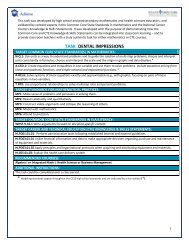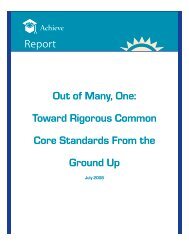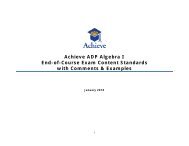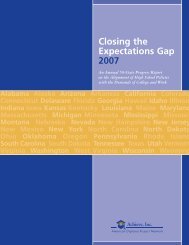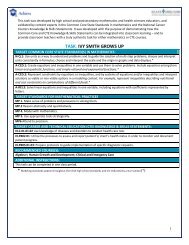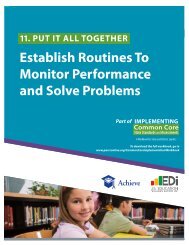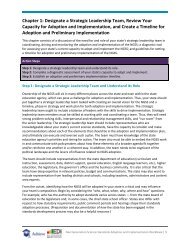Transforming Statewide High School Assessment Systems: - Achieve
Transforming Statewide High School Assessment Systems: - Achieve
Transforming Statewide High School Assessment Systems: - Achieve
You also want an ePaper? Increase the reach of your titles
YUMPU automatically turns print PDFs into web optimized ePapers that Google loves.
There are many ways that results and reports from large-scale tests can be improved.States should strive to return results before the end of the school year, especially if the results are returned early enough toinfluence what courses students take next.At least at the classroom or school level, test results should be available for each content “strand” in the standards, such as“statistics and probability.” This is difficult to do with large-scale assessments, which often don’t have enough items to reportstrand results at the student level, but it may be facilitated with EOC tests. Tests of Algebra 2, for example, ought to haveenough items to report aggregated results on “operations on numbers and expressions” and “equations and inequalities.”Results are typically reported at the student, school, district/county and state levels. States’ web-based reporting shouldbecome a tool to enable educators and district administrators to easily look at results at the classroom, course-title ordepartment levels. This analysis can be done in many states today, but the data are not easily accessible electronically in aformat that enables educators to aggregate the data as they need.Teachers should have a larger role in scoring statewide assessments. This approach is not only excellent professionaldevelopment but it also helps to demystify what is expected of all students.All or nearly all open-ended test items should be published with corresponding examples of student work at eachperformance level—and better descriptions of why the work did or did not meet standard.Score reports—at least those for middle school and early in high school—should indicate whether students are on track tomeeting college and career readiness standards by the end of high school. This may require states to vertically moderate theirelementary, middle and high school standards and tests.Incorporating Performance <strong>Assessment</strong>sSome of the essential skills that college faculty and employers value in high school graduates are very difficult to measure via on-demandtests—even good ones. For example, it is difficult via on-demand testing situations for students to demonstrate that they can engage inteamwork or perform contextualized tasks that involve extended analysis, research or communication.Accordingly, states should supplement their summative high school tests with performance assessments. Examples of performancemeasures that can capture a broader range of student skills include laboratory experiments, research papers, team projects, essays,portfolios, demonstrations, presentations and exhibitions. Using performance-based measures will increase the range of skills that are thefocus of instruction and decrease the temptation to teach only the subset of skills and knowledge that is included in the summative tests.States that have gone down this path also describe it as powerful professional development for teachers, helping them to understand moredeeply what kind of work is “good enough.”That said, getting performance assessments right at the state level is challenging. States have struggled with the cost, the workloadburdens on teachers and the inconsistency of expectations in scoring. As a result there are few examples of sustained large-scale efforts toimplement performance assessments statewide. Connecticut, Kentucky and Oregon are among the most notable examples.<strong>Transforming</strong> <strong>Statewide</strong> <strong>High</strong> <strong>School</strong> <strong>Assessment</strong> <strong>Systems</strong>: A Guide for State Policymakers 34




